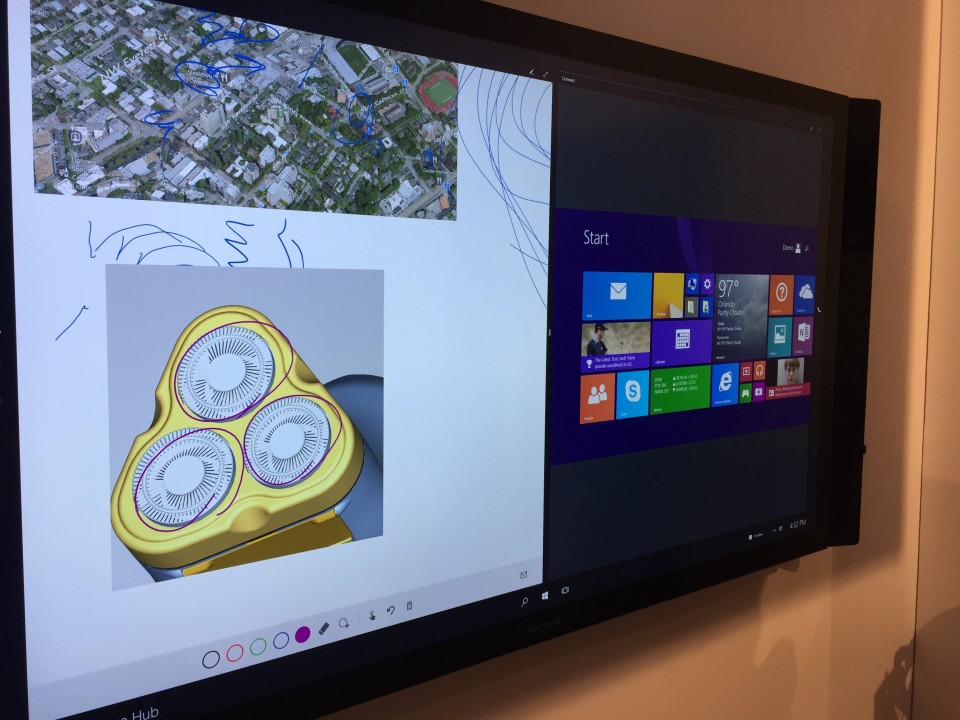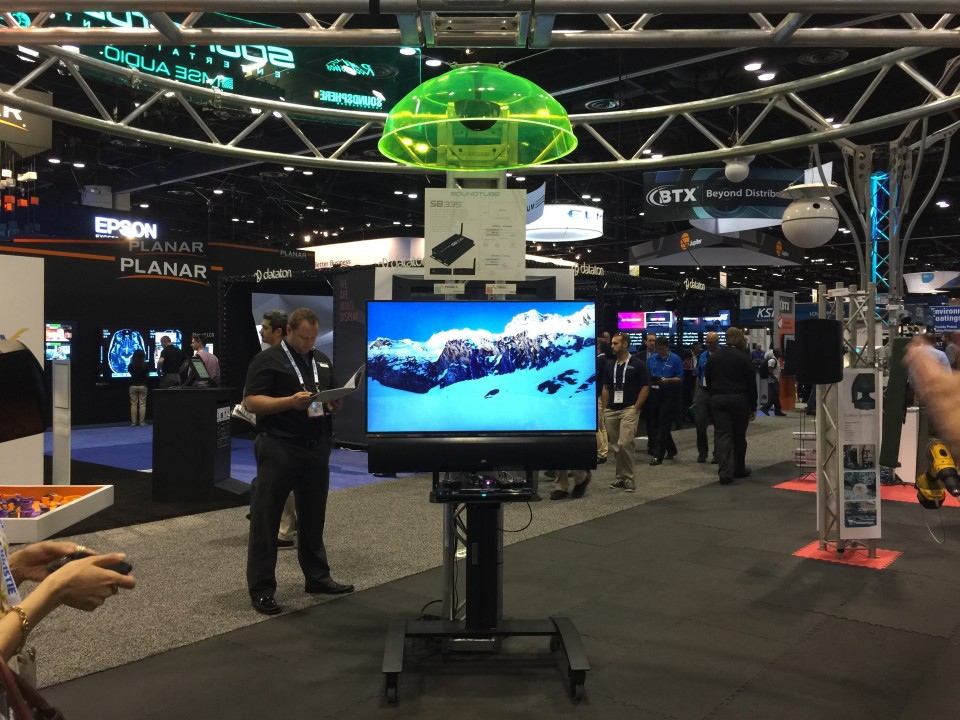I was at InfoComm 2015 this week, touring some vendors that have been recommended by our AV consultants for the Taylor Institute construction project, The Sextant Group. This was my first time at InfoComm, and I was kind of stunned at the sheer size of the trade show – and at how many similar products exist, with variations and overalaps. It’s rare to see a product that is truly unique – and from what I saw, it comes down mostly to the overall experience and how people are able to actually use the tools, rather than the feature-list checkboxes. No surprise there. Sometimes, having the most features is not a good thing. It’s having the right features (and not having the others). Here are my rough-ish notes about some of the vendors and products that we visited.
Long(ish) post, more after the break…
Mersive
- This was the most interesting product design for collaboration that I saw. The company’s founder started out in higher ed, and is working hard to develop new features, with strong and active collaboration with many organizations (CIA, Wharton school of business…)
- New features under development include Beacons to automatically configure screen sharing, and other media types natively handled without video streaming. Some very cool stuff coming up.
- This seemed like the best balance between science fiction and practical. I could easily see instructors and students adopting Mersive.
- Can be deployed either as a hardware appliance or windows app that could be loaded on any standard pc.
- Hardware appliance – Solstice Pod
- Software (Win7+): Solstice
- Workflow feels more fluid than Crestron AirMedia and similar branded versions of that platform.
- For this kind of product, we’ll need to make sure we allocate budget for updates after the first year, and to make sure we have staff trained to manage/update/deploy the system.

Crestron
- Speakers – profoundly unimpressed by their ceiling speakers. They were described basically as commodity components, assembled competently. Not inspiring. It looks like their speakers are being sold primarily as value-add to existing projects, to lock in a higher share of project cash rather than providing a really quality product. The fact that they’re dangling longer warranty periods for the entire project as an incentive to buy their speakers feels a bit icky, too.
- We’re already looking at Crestron CaptureLive HD for event/lecture capture, and have tried AirMedia for collaboration and screen sharing.
Tannoy speakers
- Much more interesting design. Company focused on speaker design, not as a simple value-add upselling option
- Speaker design (shape of cabinet, arrangement of components, etc…) produces higher quality sound
- Their demo room was pretty impressive – ceiling speakers from various vendors, head-to-head with Tannoy models. But, sadly, no Crestron speakers to compare with, because they weren’t deemed worth comparing. That’s valuable data there, too.
Microsoft Surface Hub panel
- Very nice multitouch screens.
- Amazing responsive Surface ink, on a wall-sized display. Microsoft has totally nailed digital ink. I haven’t found anything that comes close to the inking experience on Windows and OneNote using Microsoft’s pens. And I’ve been looking. Hard. They’ve definitely got a strong advantage there. Everything else feels like drawing with crayons or fiddly gadgets. Surface ink feels like writing with a pen. As it should.
- Runs standard windows software – we could in theory run Mersive Solstice on a Hub for collaboration.
- Expensive – $20,000 for 80″ screen, $7,000 for 60″ (?) – check prices
- Only able to show one additional device – windows only? Didn’t see a way to push iOS/Android/Mac screens as video sources.

Panasonic
- Laser projectors
- fantastic. Bright.
- Solid state light source, sealed so no dust gets in to downgrade brightness over time
- Amazing brightness and image quality.
- We didn’t see the 20K lumen version, which will be significantly brighter than the ones we saw
- Motion tracking PTZ video camera.
- uses facial recognition and motion tracking to follow presenter
- likely too new to use in production (first release in September)
- would need lav mic anyway.
- There’s no info on the web for this yet, because it’s still under R&D, so here’s a photo:

Soundtube
- Sound isolation speakers for kiosks etc. very effective. Not sure we have a use for this, though.

Trutouch multitouch displays
- Android powered large touch screen. Looked ok.
- Not sure what value this adds over another touch display – android managed interface?

Vaddio
- PTZ video camera with HDMI and USB out
- Lanyard remote has IR trackers for camera and microphone for presenter audio. Could be a handy way to set up a presenter, by just handing them a lanyard (and battery pack) instead of dealing with troubleshooting motion tracking
Wolfvision
- Document camera was very nice, but much more expensive
- Collaboration appliance not as good as Mersive etc.
Oblong Mezzanine
- Amazing collaboration multi screen media sharing. Demos well, but suited more for many screens in a single group, rather than many groups in one room.
- Felt like a science fiction / CSI glitzy multiscreen system. Looked awesome, but to really benefit, you’d need to be pairing identically-configured sets of screens at remote locations. We don’t really need to do that – we’re looking more for sharing resources at a single, local pod in a f2f workgroup setting. But still, impressive stuff.
- Also, seemed more flashy than others – seemed like more training might be needed to properly use it.
